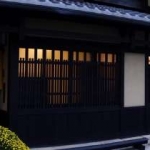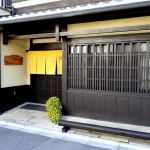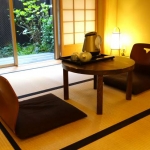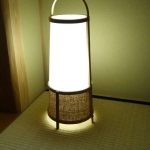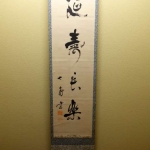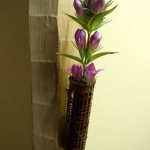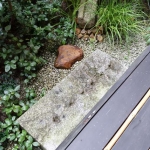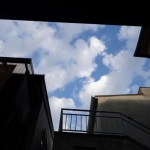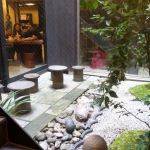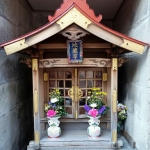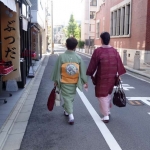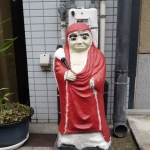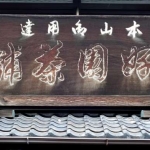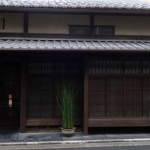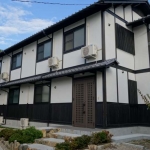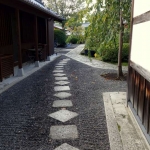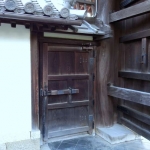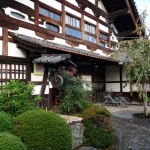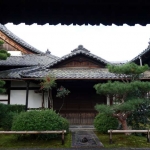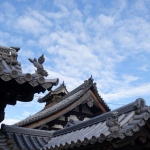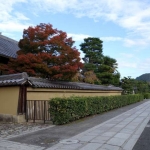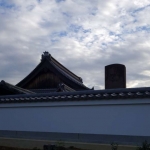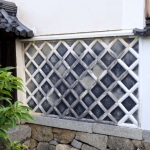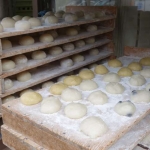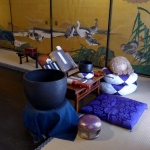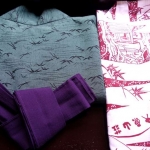Sleep – My Recent Experiences
No place for me at the inn
But I find consolation
sleeping beneath the
Hazy moon and the
Cherry blossoms.
–Rengetsu
Arashiyama Hanare Machiya
This was an ideal location for spending two days in an Arashiyama neighborhood close to all I wanted to experience.
In contrast to the limited privacy experienced at a traditional ryokan inn, this machiya allows quests to come and go freely, using the house as their own. The house is registered as an ”Important Cultural Properties of Kyoto” by the Kyoto City Government.
Only 54 properties are registered in Kyoto. Both Kyoto city government and owners are responsibility to preserve properties for the future generations.
The Arashiyama Hanare House was built on 1935, and was completely restored in November 2008-2011. The restoration was a labor of love, requiring the participation of artisans specializing in traditional carpentry techniques, and using natural materials in all areas both inside and out. Great efforts were made to recreate an atmosphere, which will allow guests to experience the traditional way of living.
The Arashiyama Hanare House is just behind the main house, but has an independent entrance and accommodations are completely separated. The total space is 55 square meters.
The Arashiyama Hanare House offers an opportunity to experience Kyoto life in a very special part of the city, living in a typical quiet Kyoto neighborhood.
The Arashiyama Hanare House is usually rented to guests for a minimum 5 nights or longer, under a short-term lease agreement basis. Check with Tokuji Tanaka about other options.
For more information: http://arashiyamahanare.jimdo.com/
Also: https://www.vrbo.com/212184
Kiiyomachiya Sakura Ryokan- Honganji
“In March 2009, Kyomachiya Ryokan Sakura welcomed its first guests at Butsuguyacho, a town across from the gates of Nishi-Honganji temple. Kyoto is an ancient city where traces of history are still very much alive. Every town in this city is full of unique and deeply historical sceneries. Since we made this place our home, we learned many things and experienced countless wonderful encounters, all of which were possible only because of this very special city. With our continued appreciation and respect for this community, we will strive to welcome every one of our guests with our warm and friendly Kyoto hospitality.”
I enjoyed my stay here, especially because of the friendly staff and the cultural offerings they arranged for me; pickle tasting and a flower arranging session with a local Buddhist nun. They often provide regular events that introduce traditional culture to visitors.
Niishijin KyoMachiya
This machiya has been restored with a perfect blend of traditional aesthetics and modern comforts.
Iori’s machiya contain the fundamental elements of authentic machiya living: almost all houses are equipped with a tokonoma alcove, an inner garden and cypress bathtub. They are also equipped with western bathrooms and simple kitchens (for fire safety reasons cooking in the houses in not allowed). Iori: Tel: 352-0221; www.kyoto-machiya.com/
Nishijin textile studio open weekday from 8:30 to 17:30
If you wish to visit the studio, please let them know in advance.
(NOTE: Staying guests only)
http://www.kyoto-machiya.com/eng/machiya/isa.html
Iori also offers the Origin Art Program, a unique hands-on program designed to introduce the traditional culture of Japan. Programs include classes in tea ceremony, calligraphy, Noh theater, Zen meditation and more.
For more information, contact Origin director Bodhi Fishman: bodhifish@gmail.com
Shunko-in Shukobo
Accommodation doesn’t get much more Zen than this delightfully tranquil shukubo (temple lodging) in Shunkoin Temple, located within the Myoshin-ji temple complex in northwest Kyoto. The simple five rooms all come with modern comforts that include free Wi-Fi and access to a well-equipped shared kitchen. But the real draw is the calm and quiet and the chance to take part in Zen meditation under the guidance of Shunkoin’s English-speaking vice abbot, the Rev. Kawakami. He runs several meditation sessions a day that can also be followed by a tour of the temple.
Insider Tip: Temple stays are becoming extremely popular, so book well ahead, especially in cherry blossom season (late March-early April) and autumn.
Room to Book: Not all the rooms are en suite. If you don’t want to share a wash space and toilet, you’ll need to request one of the two with a private bathroom.
It was ideal for early morning visits to To-ji and Ryoan-ji gardens and later a delicious dinner at RakuRaku.
The temple hosts many important artistic and cultural properties related to Zen Buddhism and also connected to Shinto and Christianity.
Contact: rev.taka.kawakami@gmail.com
Yumoto Onsen Ohara Sansou
When I visited Ohara I decided to stay over night and enjoy a leisurely evening and early morning there.
See: http://www.ohara-sansou.com/
Another option: http://www.seryo.co.jp/english/index.html









